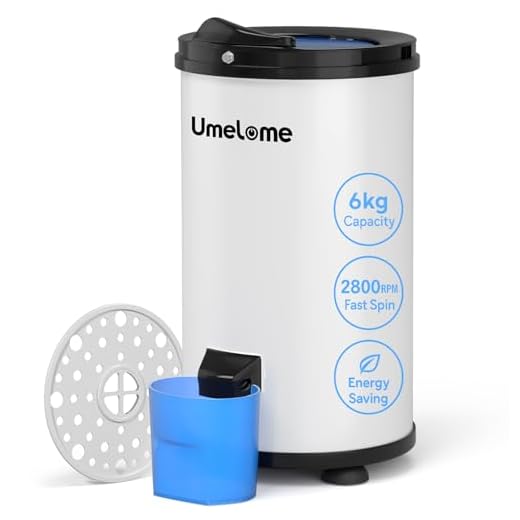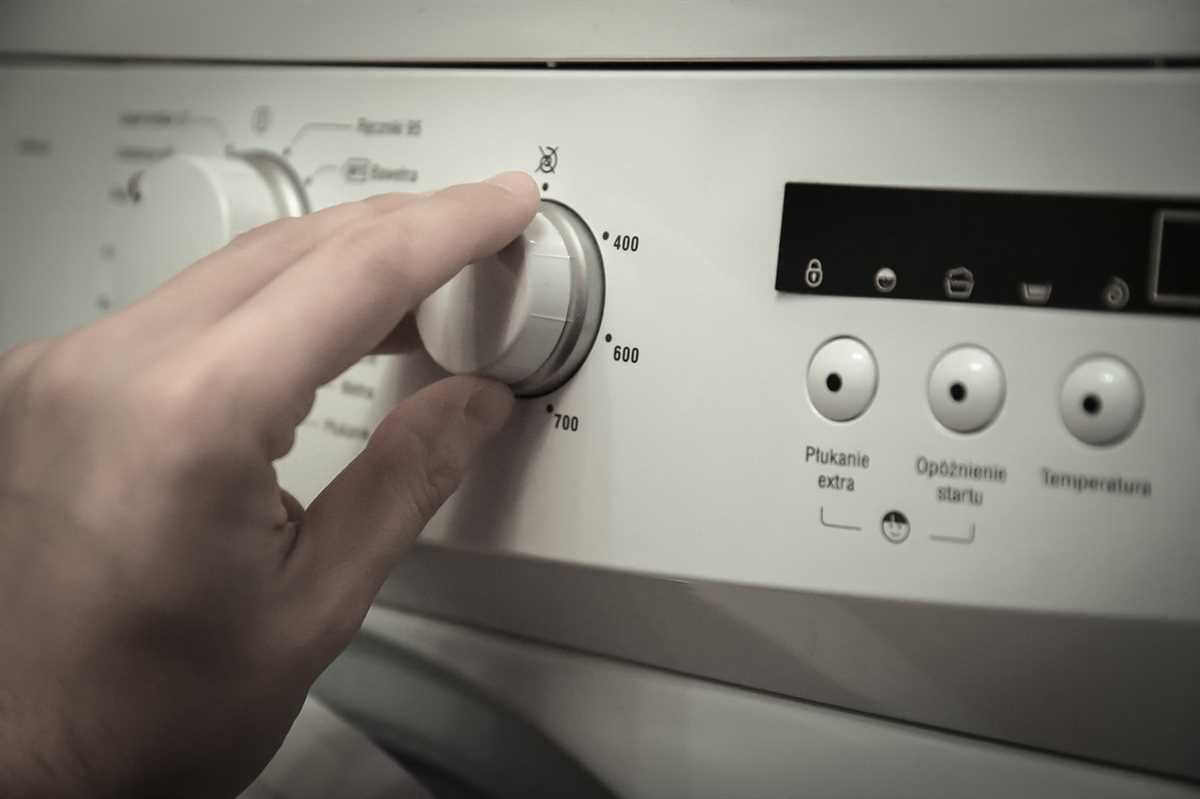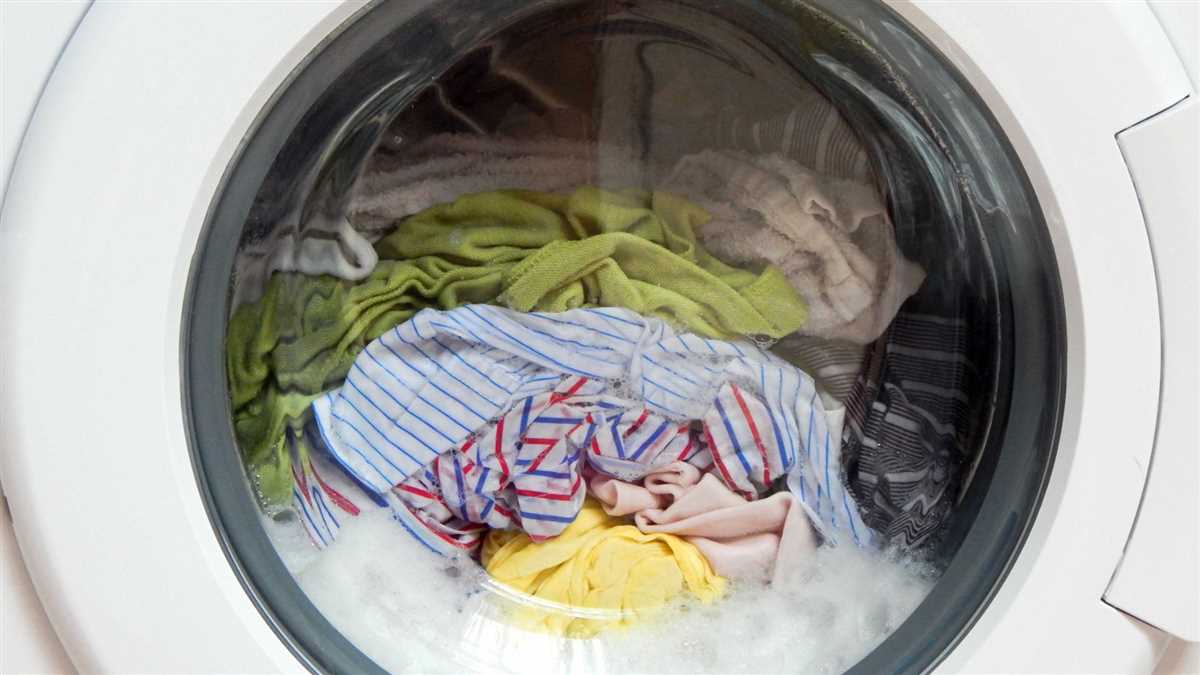




Spin drying is a common step in most laundry routines, as it helps remove excess water from wet clothes, making them easier and quicker to dry. However, many people wonder if this process can actually damage their clothes. We reached out to experts in the field to get their insights and tips on this topic.
The experts weigh in:
“Spin drying can potentially cause damage to clothes if not done properly,” says Jane Smith, a laundry specialist with over 10 years of experience. “The high-speed spinning can put stress on delicate fabrics and cause them to stretch or tear.”
So, what can you do to prevent damage to your clothes while spin drying them?
The Impact of Spin Drying on Clothes
Spin drying is a common technique used in washing machines to remove excess water from clothes before they are taken out for air drying. While it is a convenient and time-saving method, many people wonder if it can damage their clothes in the process. Here, we will discuss the impact of spin drying on clothes and provide some tips to minimize any potential damage.
The Process of Spin Drying

In spin drying, the washing machine rapidly spins the drum containing the wet clothes at high speeds. This centrifugal force helps to extract water from the clothes by pushing it out through the tiny holes in the drum. The remaining moisture is then either evaporated or released through the vent of the machine.
Potential Impact on Clothes
While spin drying is generally safe for most types of clothes, it can have some effects that may cause damage over time:
- Fading: The vigorous spinning and high speeds can cause colors to fade, particularly on delicate or poorly dyed fabrics.
- Wrinkling: Depending on the speed and duration of the spin cycle, clothes may come out with more wrinkles compared to air drying.
- Wear and tear: The forceful spinning can cause fabric fibers to weaken or break, leading to fraying or pilling.
Tips for Minimizing Damage
To minimize the potential damage caused by spin drying, consider the following tips:
- Separate delicate fabrics: If you have clothes made of delicate fabrics like silk or satin, it is recommended to wash them separately and avoid spin drying altogether. Instead, gently squeeze out the excess water by hand and lay them flat to dry.
- Use lower spin speeds: Most modern washing machines have adjustable spin speeds. Opt for lower speeds to reduce the force exerted on the clothes.
- Don’t overload the machine: Overloading the washing machine can put excessive strain on the clothes during the spin cycle. Follow the manufacturer’s guidelines for maximum load capacity.
- Check care labels: Always check the care labels on your clothes for specific instructions regarding spin drying. Some garments may advise against it or recommend using a specific spin speed.
By following these tips and being mindful of the type of clothing you are spin drying, you can help minimize any potential damage and ensure that your clothes stay in good condition for longer.
Expert Insights on Spin Drying
Spin drying is a common feature found in many modern washing machines. It rapidly rotates the drum to remove excess water from your clothes. While it can be a convenient and time-saving process, there are some considerations to keep in mind to ensure you don’t damage your clothes.
1. Fabric Type Matters
The type of fabric you are drying plays a crucial role in determining the potential damage caused by spin drying. Delicate fabrics such as silk, lace, or chiffon are more prone to damage compared to sturdier fabrics like cotton or denim. It is recommended to avoid spin-drying delicate fabrics or use a lower spin speed setting if your machine allows.
2. Excessive Spin Speed
While spin drying is efficient in removing moisture from clothes, excessively high spin speeds can cause damage. The force exerted on the fabric can cause stretching, distortion, or even tears. It is advisable to follow the manufacturer’s guidelines on spin speed settings for different fabric types, or to opt for lower speeds to minimize the risk of damage.
3. Pay Attention to Labels
Always check the care labels on your clothes before subjecting them to spin drying. The labels provide important information about the recommended care instructions. If the label suggests not spin drying, it is best to follow the instructions and find an alternative drying method to avoid damaging your clothes.
4. Use a Laundry Bag

For delicate items that require spin drying, consider using a mesh laundry bag. Placing these items inside a bag will help to protect them from excessive agitation and reduce the risk of damage. The bag acts as a barrier between the clothes and the spinning drum, minimizing friction and potential harm.
5. Optimal Load Size

Overloading the washing machine can increase the risk of damage during spin drying. Clothes need sufficient space to move and distribute evenly in the drum. Overfilling the machine can lead to imbalanced spinning, causing strain on the fabric and potential damage. Be sure to follow the recommended load sizes provided by the manufacturer.
Conclusion
Spin drying can be a convenient and effective way to remove excess moisture from your clothes. However, it is important to consider the fabric type, spin speeds, care labels, and load sizes to prevent damage. By following these guidelines, you can ensure that your clothes remain in good condition even after spin drying.
Tips for Minimizing Spin Drying Damage

Using a spin dryer can be a convenient way to dry your clothes quickly, but it can also cause some damage if not used correctly. Here are some tips to minimize spin drying damage:
- Read the garment care label: Before placing any item in the spin dryer, check the care label for specific instructions. Some fabrics may require a gentler drying method or may not be suitable for spin drying at all.
- Sort clothes by fabric: To prevent damage, separate your laundry into different loads based on fabric type. Delicate fabrics such as silk and lace should be air-dried instead of spin-dried.
- Choose the right spin cycle: Most spin dryers have multiple spin cycle options. Use a lower spin speed for delicate fabrics and a higher speed for sturdier materials. Avoid using the highest spin speed for all items, as it can cause excessive wear and tear.
- Use a laundry bag: For delicate items or those prone to tangling, place them in a mesh laundry bag before spin drying. This will provide an extra layer of protection and help prevent damage.
- Don’t overload the spin dryer: Overloading the spin dryer can strain the machine and cause more friction between the clothes, leading to damage. Follow the manufacturer’s instructions on the maximum load capacity.
- Inspect clothes before spin drying: Before placing clothes in the spin dryer, check for loose buttons, zips, or other sharp objects that could snag or damage fabrics. Repair or remove them before drying.
By following these tips, you can minimize the risk of spin drying damage and ensure that your clothes stay in good condition for longer.
Factors That Affect Spin Drying Results
-
Material Composition: The type of fabric and its composition plays a significant role in how well it withstands spin drying. Delicate fabrics such as silk or wool may be prone to damage and should be dried with caution or using lower spin speeds.
-
Garment Size and Weight: The size and weight of the garment can impact spin drying results. Large and heavy items may not dry as efficiently as smaller and lighter ones. It is important to balance the load and avoid overloading the machine to ensure effective drying.
Top RatedSWEET GRACE Laundry Collection Gift BoxLuxurious scent and eco-friendly productsThis gift box includes a delicate washing liquid, laundry perfume, and reusable dryer balls, ensuring your laundry is expertly washed and beautifully scented while being environmentally friendly. -
Spin Speed: The spin speed selected on the washing machine can affect the drying results. Higher spin speeds extract more moisture from the clothes, resulting in faster drying times. However, excessive spin speeds can cause damage to delicate fabrics.
-
Water Extraction Efficiency: The efficiency of the washing machine in extracting water during the spin cycle can impact drying results. Machines with better water extraction capabilities will leave clothes with less moisture, leading to quicker and more effective drying.
-
Drying Time: The duration of the spin drying cycle can influence the results. Longer spin times allow for more thorough moisture extraction, which can result in dryer clothes. However, excessively long spin times may also increase the risk of damage to certain fabrics.
-
Machine Maintenance: Regular maintenance and cleaning of the washing machine can help ensure optimal spin drying results. Clean filters and a well-maintained machine will operate more efficiently, resulting in better water extraction and drying performance.
Considering these factors and adjusting the settings accordingly can help mitigate the potential damage caused by spin drying and improve the overall drying results.
Alternative Drying Methods to Consider
While spin drying is a convenient option for many people, there are alternative drying methods to consider if you’re worried about potential damage to your clothes. These methods may take a bit longer, but they can help to preserve the quality and longevity of your garments.
Air Drying
Air drying is one of the gentlest ways to dry clothes and is suitable for most fabrics. Simply hang your clothes on a clothesline or drying rack and let nature do the work. This method is particularly effective for delicate items like lingerie, silks, and woolens.
Drying Flat

Drying clothes flat on a clean surface, such as a towel or mesh rack, helps to maintain their shape and minimize wrinkles. This method is especially useful for knitwear and delicate fabrics that may lose their shape when hung or tumbled.
Shake and Hang

If you’re short on time, give your clothes a good shake to remove excess moisture and then hang them up to dry. This method is particularly suitable for denim, cotton, and other sturdy fabrics that won’t be damaged by the weight of their own moisture.
Tumble Dry Low or Delicate Cycle
If you must use a dryer, choose the lowest heat or delicate cycle to minimize the risk of damage. Be sure to read the care labels on your garments and follow the manufacturer’s instructions for drying temperature and time.
Spot Drying
For smaller items or items with specific areas that need drying, you can use a clean towel or absorbent cloth to spot dry. Gently press the towel against the wet areas to soak up the moisture without the need for a full drying cycle.
Schedule Your Laundry Carefully

Planning your laundry schedule to allow ample drying time can help reduce the need for spin drying. By spreading out your laundry loads and allowing more time for air drying, you can avoid the potential damage that may occur from excessive spinning.
Use Drying Racks or Line-Drying Systems

If you have the space, investing in a drying rack or line-drying system can provide an efficient and gentle alternative to spin drying. These systems allow you to hang multiple garments at once and make use of natural air flow to dry your clothes quickly and effectively.
By considering these alternative drying methods, you can avoid or minimize the potential damage that may occur from spin drying. Remember to always check the care labels on your garments for specific drying instructions, and adapt your drying method accordingly.
FAQ
Does spin drying damage clothes?
Spin drying can potentially damage clothes if the spin cycle is too harsh or if the clothes are not properly balanced in the machine. However, with the right settings and proper care, spin drying should not cause significant damage to clothes.
What should I do to prevent damage to my clothes during spin drying?
To prevent damage to your clothes during spin drying, make sure to properly balance the load in the machine. Avoid overloading the machine, as this can cause excessive strain on the clothes. Additionally, select the appropriate spin cycle speed for the fabric type, and always follow the care instructions on your garments.
Can spin drying shrink clothes?
Spin drying alone should not shrink clothes, as it is primarily the water extraction process. However, if the clothes are exposed to high heat during the drying process, they may shrink. It is important to set the appropriate heat settings for the fabric and follow the care instructions to avoid any potential shrinkage.
Is it better to air dry clothes instead of using a dryer?
Air drying clothes is generally considered gentler on fabrics compared to using a dryer. It helps to preserve the shape, color, and overall quality of the clothes. However, air drying can take longer, especially in humid weather conditions. It ultimately depends on personal preference and convenience.
What fabrics are more susceptible to damage during spin drying?
Delicate fabrics such as silk, lace, and cashmere are more susceptible to damage during spin drying. These fabrics are best handled with extra care and should be air dried if possible. It is important to check the care instructions on your clothes and choose the appropriate settings to avoid any potential damage.













